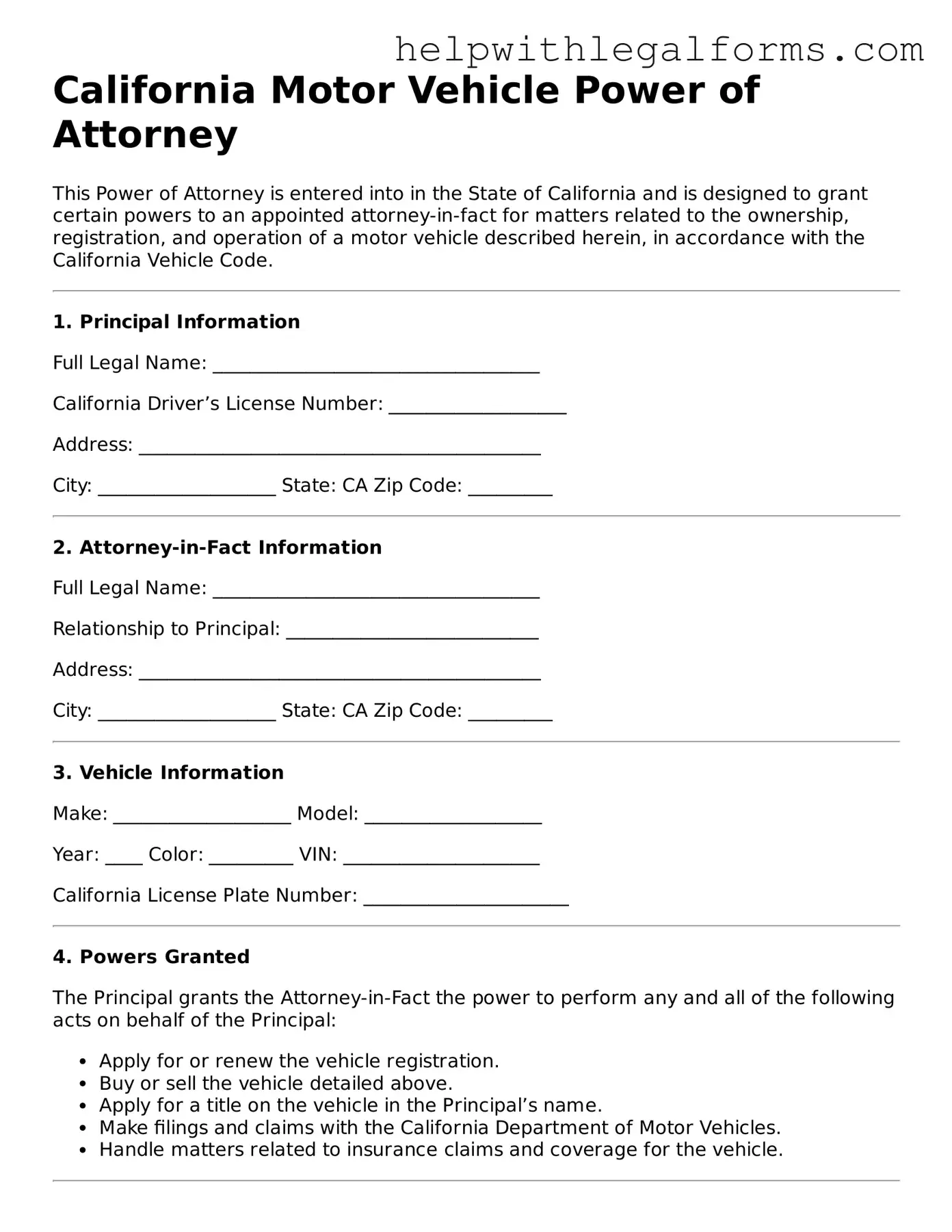California Motor Vehicle Power of Attorney
This Power of Attorney is entered into in the State of California and is designed to grant certain powers to an appointed attorney-in-fact for matters related to the ownership, registration, and operation of a motor vehicle described herein, in accordance with the California Vehicle Code.
1. Principal Information
Full Legal Name: ___________________________________
California Driver’s License Number: ___________________
Address: ___________________________________________
City: ___________________ State: CA Zip Code: _________
2. Attorney-in-Fact Information
Full Legal Name: ___________________________________
Relationship to Principal: ___________________________
Address: ___________________________________________
City: ___________________ State: CA Zip Code: _________
3. Vehicle Information
Make: ___________________ Model: ___________________
Year: ____ Color: _________ VIN: _____________________
California License Plate Number: ______________________
4. Powers Granted
The Principal grants the Attorney-in-Fact the power to perform any and all of the following acts on behalf of the Principal:
- Apply for or renew the vehicle registration.
- Buy or sell the vehicle detailed above.
- Apply for a title on the vehicle in the Principal’s name.
- Make filings and claims with the California Department of Motor Vehicles.
- Handle matters related to insurance claims and coverage for the vehicle.
5. Duration
This Power of Attorney shall become effective on the date of ____________ and, unless sooner revoked, shall remain in effect until ____________.
6. Signatures
This document is executed on this ______ day of ________________, 20___.
_____________________________
Signature of Principal
_____________________________
Signature of Attorney-in-Fact
State of California )
County of __________ )
Subscribed and sworn to (or affirmed) before me on this ______ day of ____________, 20___, by _________________________, who proved to me on the basis of satisfactory evidence to be the person(s) whose name(s) is/are subscribed to the within instrument and acknowledged to me that he/she/they executed the same in his/her/their authorized capacity(ies), and that by his/her/their signature(s) on the instrument the person(s), or the entity upon behalf of which the person(s) acted, executed the instrument.
_________________________________
Notary Public
My commission expires: ___________
